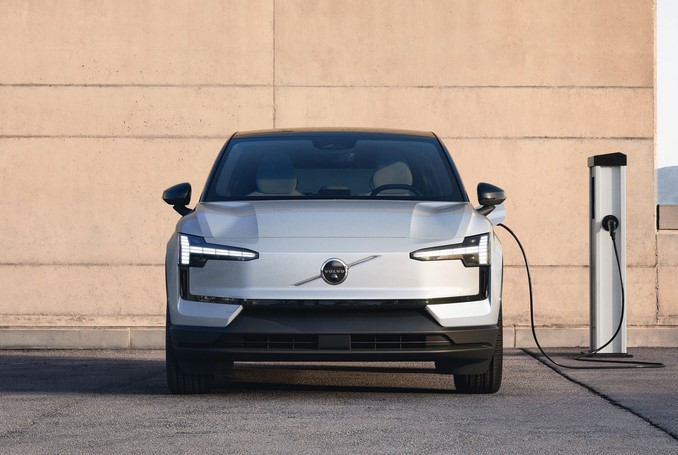Category Archives: Electric & Hybrid
EV Incentives and Tax Credits 2025: How to Save on Your Next Purchase

Source:https://images.cdn.autocar.co.uk
As the demand for electric vehicles (EVs) continues to rise, both governments and automakers are making significant strides to make these eco-friendly cars more affordable. For 2025, the landscape of EV incentives and tax credits 2025 has evolved with new regulations and incentives that are designed to encourage consumers to make the switch to electric mobility. If you’re considering buying an electric car in the near future, understanding these incentives can help you save hundreds, even thousands, of dollars on your next purchase. This article breaks down the key benefits of these programs and how you can maximize your savings when buying an EV in 2025.
What Are EV Incentives and Tax Credits?
The primary goal of EV incentives and tax credits 2025 is to reduce the upfront cost of electric vehicles and to promote environmentally sustainable transportation. These financial benefits come in the form of tax credits, rebates, and other perks provided by both the federal government and state/local authorities.
For 2025, the most notable change is the extension and expansion of existing programs, particularly the federal tax credit for electric vehicles. Here’s a breakdown of the incentives you can expect:
1. Federal Tax Credit
The federal government, through the Inflation Reduction Act (IRA) of 2022, introduced major changes to the EV tax credit program. For 2025, the federal government is offering tax credits of up to $7,500 for new qualifying electric vehicles. However, there are some important details to consider:
- Income Limits: One of the major changes is the introduction of income limits. To qualify for the full tax credit, your modified adjusted gross income (MAGI) must be below $150,000 for individuals and $300,000 for joint filers. This ensures that the incentives are more focused on middle-income families and individuals.
- Vehicle Price Caps: To ensure that the tax credits are benefiting consumers in the middle-income bracket, there are also price caps on eligible vehicles. For sedans, the price cap is $55,000, while for SUVs, trucks, and other larger vehicles, the limit is $80,000.
- Domestic Manufacturing Requirements: One of the most important criteria for receiving the full tax credit is that a significant portion of the EV’s components must be sourced and assembled in North America. This includes requirements for the vehicle’s battery components to be sourced from either the U.S. or its trade partners.
2. State and Local Incentives
While federal tax credits are the most well-known form of EV incentives, many states offer additional rebates and incentives to encourage the adoption of electric vehicles. These can vary significantly depending on where you live, but some examples include:
- Rebates: Some states offer direct cash rebates that can range from $1,000 to $5,000, depending on the vehicle’s price and its electric range.
- Tax Credits: In addition to the federal tax credit, states like California, New York, and Oregon also offer their own state-level tax credits that can be combined with federal benefits.
- Sales Tax Exemptions: Certain states provide exemptions or reductions on sales tax for EV buyers. In states with high sales tax rates, this can be a significant saving.
- HOV Lane Access: Many states allow EV owners to drive in high-occupancy vehicle (HOV) lanes, even with only one occupant in the car. This is particularly valuable in traffic-heavy regions.
- Charging Infrastructure Support: Some states also offer rebates or financial assistance for installing home charging stations, making the transition to an electric vehicle even more cost-effective.
How to Maximize Your Savings in 2025
When shopping for an electric vehicle, it’s important to be proactive in understanding how to maximize your savings. Here are some tips to help you get the most out of EV incentives and tax credits 2025:
1. Choose the Right Vehicle
Not all electric vehicles qualify for the full tax credit. When selecting your EV, make sure it meets all the criteria set by the federal government, such as the domestic manufacturing requirement and price limits. It’s also worth checking whether the vehicle qualifies for any state-specific incentives.
2. Work with an EV Dealer Who Understands Incentives
An experienced EV dealer will be able to guide you through the process of applying for tax credits and rebates. They can also help you identify which vehicles in their inventory are eligible for the most generous incentives. Some dealerships even assist with paperwork and help you claim state and federal rebates on the spot.
3. Time Your Purchase Carefully
Incentives can sometimes change mid-year, and the availability of tax credits may be subject to annual adjustments or funding limitations. Timing your purchase toward the beginning of the year can ensure you lock in the maximum savings before any changes occur.
4. Explore Charging Incentives
Beyond purchasing the vehicle, consider any incentives related to installing a home charging station. Some states offer rebates or financial assistance for EV charging infrastructure. Make sure you research what’s available in your area to help cover the costs of setting up a charging station in your home.
5. Keep an Eye on Updates
The world of EV incentives and tax credits is dynamic, with new regulations and programs frequently announced at both the federal and state levels. Stay informed about any updates to tax laws or local incentives that could further reduce your costs.
As you can see, EV incentives and tax credits 2025 offer a range of opportunities for those looking to transition to electric vehicles. With the right knowledge and careful planning, you can take full advantage of these savings, potentially reducing the total cost of your EV purchase by thousands of dollars. From federal tax credits to state-specific rebates and additional perks, the landscape of EV incentives is evolving rapidly, making it an ideal time to consider an electric vehicle. Stay informed, and you can drive away in a new EV with significant savings in 2025.